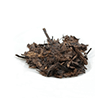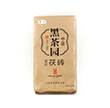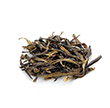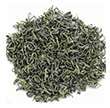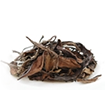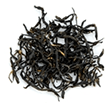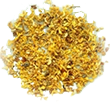About Green Tea
- Oxidization: Non-oxidized
- Growing Regions: Zhejiang, Anhui, Jiangxi, Jiangsu, Szechuan, Hunan, Hubei , Guangxi, Fujian, Guizhou
- Best Seasons To Purchase: Spring and Autumn
- Pharmacological Elements: Caffeine, flavonol, tea polyphenol, vitamin C and E, catechins, carotene, minerals including zinc, selenium, and florin.
There are many legends as to the origins of tea, but somehow, somewhere in modern day China, some leaves from the Camellia sinensis plant ended up in some hot water, most likely in the Yunnan region of China about 3,000 years ago. From there, people throughout China simply collected and dried Camellia sinensis leaves and stored them until needed. What began as food became a medicine, then a regional beverage, then a royal prerogative, then a cultured ritual, then a trading commodity and finally a beverage for the masses.
Production of Green Tea
Each successive century has provided some refinement in the processing of Green Tea but the process has 3 basic steps:
“Kill-Green” (also known as Fixing”)
Stops the natural oxidization and growing processes within the leaves without damaging them. Steaming the leaves, hand pressing in a hot pan and baking techniques are used. This also sets up the next step for Rolling/Forming the leaves.
Rolling/Forming
Leaves are passed through hot and/or cold rollers to slightly break down the leaves, which establishes the shape of the leaves and intensifies the tea flavour.
Drying
Stabilizes the final moisture content of the leaves, stops oxidization, prevents mould growth, removes any grassy leaf taste and develops the tea's aroma. Sun drying, pan heating and hot air methods are used.
Because Green Tea is exposed to the least amount of processing, this tea retains more of the naturalness of the tea plant than any other tea. More than 85% of the caffeine, 50% of the chlorophyll and most vitamins are retained.
A Quick History of Green Tea
The history of tea begins with the history of green tea. Somehow, somewhere in modern day China, some leaves from the Camellia sinensis plant ended up in some hot water, most likely in the Yunnan region of China about 3,000 years ago. People first ate the fresh leaves and then collected, dried and stored them until needed. In time, the leaves were boiled with items ranging from spices, fruits, vegetables and meat. By boiling tea leaves with bark, roots and other plants and observing the effects, through trial and error the earliest foundations for what would become Traditional Chinese Medicine were established.
By the 1st century BCE, the Emperor of the Qin Dynasty (221 - 206 BCE) unified China, consolidated the first stage of The Great Wall and built his tomb with the Terracotta Warriors standing guard. For the first time, tea leaves were being boiled without any other ingredients and tea was being enjoyed as a beverage in its own right, rather than as a medicine. It was during this time that word about tea spread throughout the Empire and became a much sought after commodity.
At this time, tea leaves were dried and charred, yielding a bitter and astringent brew. Between the 1st and 6th centuries CE, the technique of steaming, compressing and baking the leaves into hard tea cakes was developed. This technique transformed green tea into a sweeter brew, no doubt quite strong and astringent by today's standards.
It was during the Golden Age of the Tang Dynasty (618-907 BCE) that dedicated tea growing gardens were created and sophisticated production methods established. Tea was made by scraping the tea cakes and boiling the scrapings and sometimes adding fruit and flower flavouring such as Jasmine. Cheap low quality tea cake made from stems and leftovers was traded with border regions who valued the tea as a welcome supplement to their meager diets. This tea became known as “border tea” and in these regions, even served as currency. Within China, tea drinking became a refined and sophisticated pastime and was subsequently introduced to Japan by Buddhist monks. The Japanese took the ritual aspects of tea to entire new levels and have maintained the transcendental view of tea drinking established by the Tang into the modern age.
In the Song Dynasty, (960 - 1279 CE), tea production, consumption and refinement reached yet higher levels. Powdered green tea whipped into a froth was first developed and sophisticated pottery exclusively for use in tea drinking was designed. Under the Yuan Dynasty (1271 - 1368 CE) of the Mongols of Kublai Khan, who had been brought up on pungent border tea, tea leaves were first roasted and in the Ming Dynasty (1368 - 1644), oxidization techniques were discovered and a new kind of tea became all the rage - Red Tea (known as Black Tea in the West).
Today, China is the world's largest Green Tea producer, followed by Japan, Vietnam, Korea and other countries. Tea for Green Tea production is grown in 18 provinces in China, yielding over 400,000 tons annually. Green Tea is also China's largest tea export, which accounts for about 80% of the world's total Green Tea trade volume.
What began as food became a medicine, then a regional beverage, then a royal prerogative, then a cultured ritual, then a trading commodity and finally a beverage for the masses.
To continue the story, see Black Tea - History of Black Tea
Flavours of Chinese Green Tea
To learn about the flavours of Green Tea, see the Flavour Guide
Storing Green Tea
Because Green Tea is exposed to the least amount of processing, the leaves are subject to natural enzymatic breakdown by oxidation just like any other organic material and faster than other teas. Green Tea is best kept in a cool, dry place in an airtight container or even in a refrigerator. We recommend refrigeration which actually improves the taste of the tea, as well as making it last much longer. However, if refrigerated storage is used, the tea should be kept refrigerated at all times as successive warming and cooling will degrade the tea.
Green Tea And Health Benefits
There are many health benefits attributed to drinking Chinese tea, ranging from feelings of well-being to near magical cures. For the average Westerner, much of this interest is focused on ancient claims related to weight loss and more modern claims of cancer-prevention due to tea's anti-oxidant properties. Each person must make their own assessment of the facts. While there are centuries of tradition and empirical evidence from Traditional Chinese Medicine, there is little modern scientific consensus that supports the health benefits of tea. Even the effect of anti-oxidants to prevent anything has recently been drawn sharply into focus.
We believe that any food product can have positive and/or negative health effects and in varying degrees for different individuals. We do not recommend teas on the basis of health benefits and at this point, do not think it is prudent to recommend tea-drinking for anything other than to enjoy the wonderful flavour and the experience of enjoying tea alone or with friends.
For reference purposes only, we list the benefits of Green Tea as commonly recognized in Traditional Chinese Medicine:
- Tea CATECHINS have anti-bacterial and anti-virus properties
- Regulates cholesterol and high blood pressure
- Bacterial killing properties in the mouth and intestines
- Tea catechins and polysaccharides can lower blood sugar
- Improves blood flow
Caffeine
It is common to hear people say “Tea has much more caffeine than coffee”. It is just as common to hear the opposite point of view. In fact with all the varieties of teas and coffees available, the different methods of manufacturing and preparing them for consumption and the different amounts consumed, both statements are in need of significant qualification.
So how much caffeine does tea and coffee have? Scientific studies and consumer group reports can both be less than detailed about what teas were used in their research. We will refer to a well detailed study published by the British Government (Survey of Caffeine Levels in Hot Beverages, Food Standards Agency, UK, August 2004):
- All Teas: mean 40 mg per serving
- Instant Coffee: mean 54 mg per serving
- Ground Coffee: mean 105 mg per serving
It has been generally believed that Chinese Green Tea has less caffeine than Black Tea. There is much study and discussion on this subject which suggests that his may not be the case. In fact Green Tea may have more caffeine than Black Tea. The confusion has been the result of more broad and unqualified statements that compare apples to oranges and not apples to apples, so to speak.
Most Black Tea exported to the West is from India and the Camellia assamica plant from which Indian tea is made produces higher levels of caffeine than from the Camellia sinensis variety that is used for Chinese teas. Furthermore, the oxidization process used in making Chinese Black Teas appears to reduce caffeine content rather than increase it as previously thought. So when you compare Chinese Green Tea to Chinese Black Tea, caffeine content in Chinese Green Teas seems to be higher than in Chinese Black Teas. Both are less than Indian Black Teas and all teas are significantly less than coffee.
(Note: We use the term “Chinese Black Tea” as it is commonly used in the West to describe what are actually known in China as Red Teas. The true Chinese Black Teas as they are known in China are the post-fermented, aged teas such as Pu-Erh Tea).
But there is a way to reduce the caffeine level of any tea if you are sensitive to it. Any tea is best made using the traditional Chinese method of tea-making known as Gong Fu Cha (Tea With Great Skill). This highly controlled method of tea-making is characterized by using small teapots and multiple brews with very short steeping times of just a few seconds. This intensifies the flavour of any tea and reduces the caffeine consumed compared to Western methods of tea-making. In Gong Fu Cha, the first brew is for washing the leaves and is poured away, so it is not consumed. This also has the effect of washing away much of the caffeine which is highly soluble in water.
To learn about tea-making using the traditional Chinese Gong Fu Cha (Tea With Great Skill) technique, read our guide Gong Fu Cha - The Complete Guide To Making Chinese Tea by Daniel Lui.
 Top of Page
Top of Page

Ask The Tea Wizard
Don't know which tea is right for you? Answer a few questions and the Online Wizard will show you all the Chinese teas that suit your taste.


